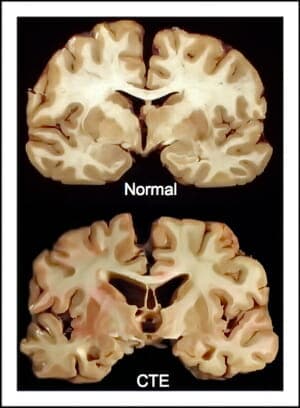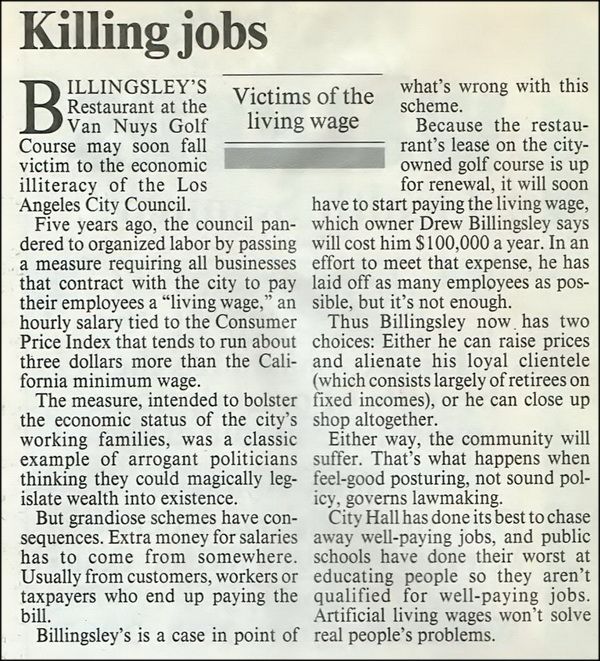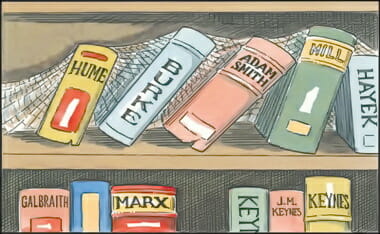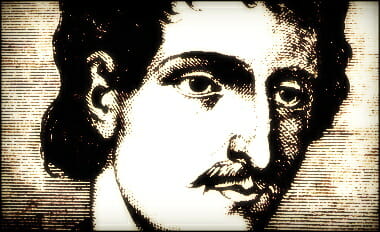This is a large excerpt from an article that was VERY informative, and lays to rest many of the challenges sometimes presented to the believer regarding Giordano Bruno, the “first scientific martyr.” While this is not the COMPLETE article, it is enough of it to squash any misuse of history.
I start two pages in. If you wish to read the entire article, you can go to CRS’s store to purchase back issues. This is an article found in: Creation Research Society Quarterly 2014. 50:227–236.
Here is the abstract followed by the article:
The martyrdom of the sixteenth-century philosopher and professor Giordano Bruno is widely regarded by scholars as the beginning of the war between science and religion. A review of the case documents that Bruno’s difficulties were not due to his science, but rather to the clear, open theological conflicts he had with Christianity and his attitude toward authority. Bruno also experienced numerous major conflicts with professors and philosophers of his day, which did not help his case.
I held off on posting this article for a while. I wanted the article to run it’s course, but in posting this article I hope to get some apologists plugged into an excellent Journal on various topics dealing with science and creation. I hope to put in the minds of like minded people the consideration of all the resources at CRS to be part of the apologists armory.
Giordano Bruno: The First Martyr of
Science or the Last of the Magicians?
by Jerry Bergman
….The First Scientific Martyr
Bruno is so important to many critics of the church that his death is commonly listed as the “first scientific martyr” and an “example of the inevitable collision between rigid theological dogma and freedom of speculation within natural philosophy, the precursor to modern science” (Shackelford, 2009, p. 60). Its importance is so critical that Bruno’s death is used by historians to mark the transition from the “Renaissance philosophy” era to the “Scientific Revolution” era (Ingegno, 1998). A scientific think tank in Germany committed to debunking religion is named after Bruno (Higgins, 2007, p. A11). Another recent reference penned to support the claim that Christianity has long repressed science and free inquiry concluded that the best examples of this repression were “the religious censorship of Bacon in the 1200s, the burning of the heliocentrist astronomer Bruno and the censure of Galileo in the 1600s” (Aliff, 2005, p. 150). In fact, as I will document, none of these examples supports Aliff’s claim of church suppression of science (see Bergman, 1981).
Repeating the same erroneous claims about Galileo, Kevin Phillips wrote that the “papacy found Galileo guilty of heresy—and placed him under house arrest for seven years until he recanted—for propounding the Copernican argument that the earth revolved around the sun,” and then added that “in 1600 philosopher Giordano Bruno had been burned in Rome for much the same offense” (Phillips, 2006, p. 227). Harvard Professor David Landes wrote that Galileo was not the first, nor will he be the last, to suffer at the hands of the church over science progress:
Equally momentous, if less remembered, was the burning in Rome in February 1600 of Giordano Bruno … whose imaginary concept of the universe came far closer to what we now think than that of Copernicus or Galileo: infinite space, billions of burning stars, rotating earth revolving around the sun, matter composed of atoms, and so on. All heresies, linked to mysteries and magic. In effect, by burning Bruno, the Church proclaimed its intention of taking science and imagination in hand and leashing them to Rome. (Landes, 1999, p. 181)
For an excellent review of why these claims about Copernicus and Galileo are erroneous, see Moy (2001).
Bruno not a Scientist
Although, historically, the lines between what we call science and religion were not clearly drawn, it is clear that few professional science historians, if any, consider Bruno a scientist. Both his masters and doctorate were in theology. The major histories of science, including Dampier (1949, p. 112), Lindberg (1992), North (1995), Heilbron (2003), Grant (2004), and Singham (2007, p. 28), never mentioned Bruno even once. Some historians of science, such as Goldstein (1988, pp. 85–86), mention him as a philosopher.
As far as is known, he never collected data, never did scientific experiments, or made testable scientific observations, as did Galileo; rather, his many books were based solely on philosophical speculation. Although Bruno was neither a scientist nor an astronomer but a theologian and philosopher, he did cover cosmology as part of his lectures. Furthermore, Bruno saw himself as a philosopher of religion, not a scientist (Boulting, 1972, p. 272). His long career as a college professor and as a tutor at several leading universities is extensively documented in a sympathetic biography titled Giordano Bruno: Philosopher, Heretic (Rowland, 2008).
Bruno’s occult involvement especially caused him difficulties with both the church and state. For this reason, “many historians of science have rightly denied to Bruno a place in the history of science” (Peters, 1989, p. 243). Thus, Bruno biographer Dorothea Singer concluded from her extensive study of his life that Bruno was “in no sense a man of science” (Singer, 1950, p. v).
It is commonly implied, or openly stated, that the reason Bruno was executed on February 16, 1600, by the Italian government was because he challenged church dogma, such as claiming that the earth moved around the sun (heliocentrism), and not the sun around the earth (geocentrism). The long paper trail in his case, though, clearly shows that it was not his Copernicanism that got him into trouble, but his theological beliefs, such as his teaching that there is “no personal God” but rather “we are in God, and God is in us” (White, 2002, pp. 7, 48).
In the words of Rowland, Bruno reasoned that “God would be nothing without the world, and, for this reason, God did nothing but create new worlds” (Rowland, 2004, p. 197)—this was the essence of Bruno’s infinite worlds theology. Bruno did support Copernicanism but only to advocate “Hermetic religion as a corrective for the woes of Reformation and Counter Reformation Europe” (Shackelford, 2009, p. 61). This position put him not only in the religious sphere but in the political arena as well, which was central to his later problems.
His rejection of the orthodox Christian view of the Trinity, which he held as a young man, and his conclusion that Jesus “could not have been the son of God” were probably even more important reasons for his troubles and branding as a heretic (Rowland, 2008, p. 57). Nonetheless, Bruno made an extraordinarily difficult defendant because “his uncanny ability to put orthodoxy itself into a historical context made the certainties of dogma look uncertain” (Rowland, 2008, p. 58).
Dorothea Singer (1950, p. 5) concludes that Bruno’s whole philosophy was based on his belief in an infinite universe and infinite inhabited worlds— both ideas widely rejected then and still today, even by most big-bang cosmologists. Bruno believed not only in an “infinite universe,” but also one that “carried the seeds of its own propagation everywhere” (Rowland, 2004, p. 197). Most scientists in Bruno’s day were not supportive of Bruno’s ideas. Many prominent scientists, including Galileo and Johann Kepler, were not sympathetic to Bruno, partly because he espoused a Copernican system for mystical rather than for scientific reasons (Lerner and Gosselin, 1973).
Bruno’s Early Life
A precocious boy, Bruno became a Dominican at age 14 and wrote a total of over 60 works, mostly on theology, metaphysics, philosophy, the art of memory, and esoteric mysticism (Brinton, 1890, p. 12). His writings made him a “maverick, a misanthrope, and an extreme intellectual radical,” who “actually courted danger and controversy” by openly “confronting his enemies head-on” (White, 2002, p. 48, 9). Rowland wrote that “Bruno’s keen wits were never tempered by charity toward his weaker colleagues,” and he often referred to his peers in very disparaging terms (Rowland, 2008, pp. 113–114).
He was “at first welcomed” during his 16 years of wandering over Europe from university to university as a professor, tutor, or author. But it was never for long because he was so radical and uncharitable. Although as a lecturer he held his listeners spellbound, it was not long before “his presence always led to embarrassment” (Rowland, 2008, p. 132; see also, Singer, 1950, p. v).
This view is well recognized by Bruno scholars. Lerner and Gosselin conclude that “the common claim that Bruno challenged an ignorant and obscurantist Catholic church in a modern spirit of freedom” is largely a myth (Lerner and Gosselin, 1986, p. 126). The claim that Bruno was a “failed Galileo” was “congenial to the worldview of the 19th-century liberal” who opposed Christianity (Learner and Gosselin, 1986, p. 126), and it has been enshrined in twenty-first-century mythology. Bruno “regarded himself as … [the] prophet of a new religion,” and interest in his works was especially strong among those trying to fill the “spiritual void” left by their disillusionment with organized religion (Berggren, 2002, p. 30).
Bruno’s Problems in Society
A prolific and popular author (some of his works are still in print today—see Blackwell, 1998), Bruno was also a rebel who, when still a young man, was accused of Arianism, iconoclasm, and the possession of heretical books. After he left the Catholics, Bruno joined the Calvinists at Geneva (De Leon-Jones, 1997). He soon encountered problems with them—evidently mostly because of doctrinal disputes and his strongly worded attacks against Aristotle (White, 2002, p. 105). The church, both Catholic and Calvinist, was so wedded to Aristotle that professors in their lectures rarely deviated “even the slightest bit from the opinions of Aristotle” (Rowland, 2008, p. 100). Brinton reports that when in Geneva, Bruno was “thrown into prison for defamatory libel” (Brinton, 1890, p. 12).
According to Ernan McMullin, the Oxford professors were also outraged because they believed one of Bruno’s lectures was plagiarized from Marsilio Ficino (1433–1499). The “opprobrium of the university dons and many of the students” was so strong in England that Bruno “was all but physically expelled from the city” (White, 2002, p. 110).
Bruno next went to France, where he became a professor at the Sorbonne. Soon problems developed there, and after only two years, he was forced to move to England. After three years, he was also forced to leave England because (among other allegations) he repeatedly insulted the professors at Oxford University, claiming that they “knew much more about beer than about Greek” (Singer, 1950, p. 33; Boulting, 1972, p. 85).
Bruno soon migrated to Germany and was again excommunicated in 1590, this time by the Lutherans. Much, if not most, of Bruno’s problems were with university faculty, one example being the rector of the University of Marburg. The rector wrote that Bruno:
“went so far as to insult me in my home as if I had acted against the public interest, the custom of all the universities of Germany, and the good of knowledge.” The rector erased Bruno’s name from the university register, noting in the margin that the erasure had been done “with the unanimous consensus of the faculty in philosophy.” One of those faculty members, in turn, erased the rector’s note; apparently the faculty was not so unanimous after all, nor the rector so universally popular. (Rowland, 2008, p. 198)
In Marburg “he was obliged to flee in order to escape the ‘malevolence’ of the rector of the University” (Brinton, 1890, p. 14). Brinton opined that Bruno fled from the Lutherans of Marburg and Helmstedt to save his life. Bruno next went to Tübingen University, where he was paid to move elsewhere (Rowland, 2008, p. 209). He was forced to hastily depart from a total of ten cities in ten years, not due to his views on science, but because he managed to alienate not just the Catholic university faculty in both France and Italy, but also their Lutheran and Calvinist counterparts in other countries. His “combative personality, both in public and in print” often was at the center of many of his conflicts (Rowland, 2008, p. 202).
Returning to Rome, he was excommunicated yet again by the Catholic Church, not for teaching the theory of Copernicus, but for heresy and blasphemy by denying the divinity of Christ and asserting that Christ did not perform miracles but was actually a magician who only appeared to work miracles. His teaching that most, if not all, heavenly bodies were populated by life and that all stars and planets were themselves living also caused him major problems (Rowland, 2008, p. 174). He could not have been in trouble for espousing a moving earth and an infinite universe because “Copernicanism was not declared a heresy until 1616 [Bruno died in 1600] and, as for the infinite universe view, he was simply echoing Cardinal Nicholas of Cusa” (Hannam, 2009, p. 309).
Contemporary reports added that Bruno was “quick in temper, bitter in debate, violent in language, impatient with ignorance, full of scorn for prejudices; not a pleasant, easy-going fellow by any means; given at times to vainglorious boasting” and his prose was “so coarse that it sometimes passed beyond buffoonery into what to us seems indecency” (Brinton, 1890, pp. 17–18). The record is clear: his “views brought him into conflict with the Orthodox academics” in the university of his day (Shackelford, 2009, p. 61).
His ideas were not based on scientific observations but on his philosophical worldview. Rather than being a brilliant scientist martyred for truth, Bruno has been described by some as a misguided quack. Lerner and Gosselin describe his most important work, The Ash Wednesday Supper, as follows:
It appears to be a compendium of nonsense—a disorganized display of gross error connected by incomprehensible passages. Bruno has the Copernican model of the solar system wrong. He demonstrates total ignorance of the most elementary ideas of geometry, let alone geometric optics. He throws in scraps of pseudoscientific argument, mostly garbled, and proceeds to high-flying speculations that seem disconnected from the preceding or subsequent arguments. Even the diagrams do not always correspond to the accompanying discussions in the text. (Lerner and Gosselin, 1986, p. 126)
Under the subheading “Strange Cosmologies,” John Grant wrote that Giordano Bruno’s “version of Copernicanism” was really “incidental to his own mystical, theistic cosmology.” In fact, Bruno evidently
despised Copernicus as a mere mathematician, and … accepted the planets’ revolution about the Sun for reasons more associated with magic than with science. Bruno’s cosmology is hard for the modern mind to understand, but appears to have had strong connections to animism. The Universe was of infinite extent, and contained an infinite number of inhabited worlds. There was no deity who could be regarded as an individual; instead, the magic of Nature was the deity, present in all things. This deity was reflected in human beings in the form of the creative imagination. (Grant, 2006, pp. 88–89)
It was clear at his trial that his writings were “purely philosophical” (Boulting, 1972, p. 267). One example was his belief in the “infinity of worlds,” the existence of an endless number of worlds like our earth (Boulting, 1972, p. 268). Bruno’s speculations on an evolutionary theory of the natural world, which he called “progressive development,” were no doubt developed by reading the Latin poet Lucretius, whom he often quoted (Boulting, 1972, p. 139). Brinton wrote that Bruno’s view of evolution was developed
to the full extent of the most advanced evolutionist of to-day. “The mind of man,” he says, “differs from that of lower animals and of plants, not in quality, but only in quantity.” “Each individual,” he adds, “is the resultant of innumerable individuals. Each species is the starting point for the next.” Change is unceasing. … He extended these laws to the inorganic as well as the organic world, maintaining that unbroken line of evolution from matter to man which the severest studies of modern science are beginning to recognize. (Brinton, 1890, pp. 21–22)
In short, “the combination of newfangled and absurd theology with an unerring ability to rub people the wrong way meant that he could rarely stay put for long” (Hannam, 2009, p. 307).
Bruno’s Nonclerical Enemies
Many of Bruno’s problems involved his nonclergy enemies, such as the wealthy Venetian businessman Giovanni Mocenigo. Mocenigo personally strongly disagreed with Bruno’s ideas and was so determined to convince the church to convict Bruno of heresy that he used entrapment and then deception to get the church to act against him (Berggren, 2002, p. 31). White wrote that Mocenigo was actually desperate to convince the Inquisition that Bruno was a first-class enemy of the church. In his second statement to the Inquisition, Mocenigo became so involved in his claims that he told
Bruno he will not report him if the magus will finally submit to teaching him the occult arts. In most ways, though, this second statement is little more than a reiteration of the first [statement], for Mocenigo had clearly run out of ideas or accusations to pin on Bruno. (White, 2002, p. 94)
By this time Bruno had enough enemies, both secular and sacred, that the authorities in Italy were convinced they should imprison him. His “cosmological opinions… were never questioned,” and he was delivered “without the slightest opposition of the civil government… to the Inquisition of Rome” (Brodrick, 1961, pp. 207, 339). Bruno compounded matters by lying to interrogators—during his trial he “denied any link with the mystical arts, but the evidence for his close association with magic could be found in his books and through his known connections with Hermeticists [the followers of Hermes]” (White, 2002, p. 38). Hermes was believed to be an Egyptian priest who lived not long after Moses, though recent scholarship places him after the beginning of Christianity. His works often focused on the occult, especially astrology and alchemy. Bruno’s writings reveal that he rejected many of the scientific advances of the Middle Ages and wanted to return to the ideas of the pre-Mosaic Chaldeans and Egyptians (Heilbron, 2003, p. 718; McMullin, 2005, p. 177; Huxtable, 1997).
Boulting wrote that Bruno’s trial was conducted with moderation, and all of the depositions were “carefully and accurately recorded” (Boulting, 1972, p. 281). A major problem was Bruno’s attitude. Bruno once said, “Often have I been threatened with the Holy Office and I deemed it a joke” (Boulting, 1972, p. 264). A review of the court transcripts makes it clear the whole issue was theology, especially his rejection of the Trinity (Rowland, 2008, p. 265). Bruno was accused of theological heresy, praising religious heretics, and even fraud (Rowland, 2008, pp. 288–289).
Bruno rejected many of the central Catholic doctrines, such as transubstantiation and the virgin birth. He even called the pope the “Triumphant Beast” (Boulting, 1972, pp. 299–300). His morals were also problematic. He once told a friend that the “ladies pleased him well; but he had not yet reached Solomon’s number; the Church sinned in making a wickedness of that which was of great service in Nature, and which, in his view, was highly meritorious,” namely sexual promiscuity (quoted in Boulting, 1972, p. 266).
Bellarmine did draw up a set of eight doctrinal propositions, of which Bruno admitted he violated four—including denying that sins of the flesh were mortal sins (Rowland, 2008, p. 257). The Inquisition in Bruno’s case was at first very lenient. When the charges were proven, all Bruno had to do was show repentance and renounce his heresy, but he steadily refused (Boulting, 1972, p. 297). Of note is the difficulty of proving the Inquisition’s case—at least two witnesses were required and, in this case, both were questionable, requiring more extensive research. Rowland notes the “fact that Bruno’s trial dragged on year after year suggests that Santori and his fellow inquisitors could find no plausible way to obtain a conviction” (Rowland, 2008, p. 252). He was also accused of founding and leading a new sect, a concern then because the Catholic Church was fighting the Protestant schism in several nations (Boulting, 1972, p. 298).
When sentence was pronounced, “his life, studies and opinions were recounted, as well as the zeal and brotherly love of the Inquisitors in their efforts to convert him” (Rowland, 2008, p. 299). Bruno was given eight more days of grace to “repent” but again refused, remaining obstinate, “notwithstanding the theologians visit[ed] him daily” to convince him to mend his ways; and “when the crucifix was held out to him, he turned his face aside in disdain” (Boulting, 1972, pp. 301, 304). Nothing in the surviving record indicates heliocentricity or science had any part in the issues of concern—doctrinal matters were the heart of the church’s concern (Rowland, 2008, p. 258). Adamson wrote that Bruno
possessed no remarkable scientific knowledge, for his own writings condemn him of a degraded materialism and show that he was entangled in commonplace errors. He had no splendid adornments of virtue, for as evidence against his moral character there stand those extravagancies of wickedness and corruption into which all men are driven by passions unresisted. He was the hero of no famous exploits and did no signal service to the state; his familiar accomplishments were insincerity, lying and perfect selfishness, intolerance of all who disagreed with him, abject meanness and perverted ingenuity in adulation. (Adamson, 1903, pp. 307, 23)
In one of the most sympathetic biographies of Bruno, Rowland wrote that his “radical defiance, both of Christian doctrine and of the Inquisition’s right to enforce it and even ‘to acknowledge the inquisitors authority’” is what forced them to “respond by showing him their power” (2008, p. 268, 273).
Bruno was eventually handed over to the secular authorities, and it was the state that burned him at the stake in the style of the times as a traitor, a man judged dangerous to the welfare of the people. Mercati claimed that this decision was not made hastily:
Pope Clement VIII kept him confined for seven years, always in the hope of winning him back to the Church and to the order he had abandoned. He was well treated by the Inquisition, given a comfortable room, all the writing materials he requested, and a change of towels, bed and personal linen twice a week. He was allowed out of papal funds a pension of four crowns a month, which enabled him to order whatever food he liked. (Angelo Mercati, Il sommario del Processo di Giordano Bruno. In, Studi e Teste, 101, 1942, pp. 126 ff., quoted in Brodrick, 1961, p. 207)
A further problem is that Bruno recanted his major heresies early in his imprisonment and then later reaffirmed his original views, making him a relapsed heretic with immolation the normal penalty. Furthermore, his Spaccio de la bestia trionfante made the pope into the beast of Revelation, an act beyond heresy and into sedition because the pope was also a secular ruler.
A Martyr for Science?
In the end, Bruno’s problems were summarized by Berggren as follows: “There is little doubt that he saw himself as prophet of a new religion—or at least of a new kind of religious insight” (Berggren, 2002, p. 30). Eminent science historian Sir William Dampier wrote that Bruno “openly attacked all orthodox beliefs, and was condemned by the Inquisition, not for his science, but for his philosophy and his zeal for religious reform” (Dampier, 1949, p. 113). Professor Yates, in an entire book on the subject, argued that although often portrayed as a martyr for science, Bruno was no such thing. Rather, he was a magus who traveled across Europe preaching a gospel rooted in mystical Egyptian pantheistic texts, especially the so-called tradition of Hermes (Yates, 1991).
Yates concluded that Bruno’s teaching was neither orthodox Catholic nor Protestant doctrine but rather Egyptian magical doctrines (Yates, 1991, p. 239).
His magical, mystical alchemy probably alienated scientists more than the clergy. Francois Russo concluded that modern science would not “have been possible without the recognition that in nature” exists
certain constants, that natural phenomena are connected by permanent relationships. It will be remembered that sixteenth-century Humanism showed one trend that was in complete opposition to this, and that at one time it almost carried the day—when men like Cardan and Giordano Bruno lapsed into a naturalistic pantheism, a panpsychism, according to which the universe was a hodgepodge of uncoordinated wonders. (Russo, 1963, p. 305)
One explanation for Bruno’s portrayal as a martyr of science lies in postmodern thinking.
The orthodox story portrays Galileo too much as the rational man of modernity for him to be wholly satisfactory as a postmodern hero. Fortunately there is an alternative at hand: Giordano Bruno, who appeals more to postmodern sensibilities. Bruno combines Copernicanism with the cabala and with a supposedly ancient Egyptian form of magic. Moreover, he was executed by the church in 1600, allegedly for teaching Copernicanism, so he makes a good substitute for Galileo. This story of Bruno, the martyr to science, combines science with mysticism and is becoming increasingly popular. In fact, Bruno is even less the martyr than Galileo was. (Sampson, 2001, p. 155)
Bruno was not alone in holding to some, or even many, of his mystical ideas (Rowland, 2008). The best example is Isaac Newton, who indulged not only in alchemy but also in the mystical arts. Johannes Kepler also based some of his astronomy on mystical ideas, such as his belief that the planets and other bodies emitted musical harmonies. One critical difference is that both Newton and Kepler did not stop at philosophical speculations but did empirical research and collected data to support their theories, whereas Bruno did neither; instead, he “relied on mental geometries that are strange to us” (Rowland, 2008, p. 282).
Furthermore, Bruno carried his mystical arts far beyond many, if not most, other men of science in an age when most scientists were abandoning such ideas. Newton and others were able to work on their alchemical ideas in relative obscurity. Only recently has the extent of Newton’s involvement in the mystical arts been documented and become widely known. Kepler’s musical harmonies hypothesis served as a means of developing theories that could be empirically tested. Their philosophical speculations clearly influenced their work but did not dominate it. It was their data that made their reputations as scientists. Ironically, in spite of Bruno’s conflicts with the universities, the scholars, the state, and the church, he claimed
everything he had discovered about the immensity of the universe only strengthened his awe at creation and his joy at coming closer to its source. His attention was fixed not on what he had done wrong in his life but on what he had learned in its course, and he was consumed with eagerness to communicate those discoveries. Furthermore, he observed repeatedly that in deepening his knowledge of the universe, he had also deepened his communion with religion’s most basic truths. He quoted Psalm 19 in support of his philosophy: “The heavens declare the glory of God, and the firmament sheweth his handiwork.” (Rowland, 2008, p. 190)
Why the Bruno Myth Persists
The main reason for the perpetuation of the Bruno myth is because “post-Enlightenment historical essayists sought to exalt Bruno as an exemplary figure in the struggle for free thought against the confining authority of aristocratic government supported by religious authority” (Shackelford, 2009, p. 63). Another reason is because his case served as a means of discrediting the Catholic Church in particular and Christianity in general. An example of this is Professor Ira Cardiff, who, first, incorrectly averred that Copernicus “proved the earth NOT to be the center of the universe” by his “mass of astronomical observations,” which were not published until he died, a fact that “certainly saved him from martyrdom.” Then Cardiff claimed that no progress in science occurred for about 50 years, until “Bruno constructed a philosophy embodying the ideas of Copernicus.” Cardiff mockingly concluded that the “Church showed its appreciation of this great work by burning Bruno at the stake” (Cardiff, 1942, pp. 54–55).
Several recent references have endeavored to correct the myth. For example, Grant wrote that “one of the classic tales within the history of science is that of Giordano Bruno (1548–1600), burnt at the stake for his support of the new Copernican cosmology … the story of Bruno as a martyr in the name of science—with the implicit corollary that the Church condemned scientific progress—is false” (2007, p. 151). Grant adds that in “more modern times Bruno would have been regarded as a (probably) harmless lunatic.” Unfortunately, the myth was made secure by many widely read and respected scientists and authors from John Tyndall to Henry Fairfield Osborn (Shackelford, 2009, pp. 63–64).
One positive result of the Bruno affair is that it “influenced the Church away from a policy of punishment toward a policy of persuasion” (Rowland, 2008, p. 283), partly because, in spite of his numerous violations of both church doctrine and moral law, many high-level church leaders saw what happened to Bruno as a major injustice. If Bruno had acknowledged the authority of the church and state, he likely would not have been executed.
Conclusion
The evidence demonstrates that the common belief that Bruno was the “first martyr of science” is historically inaccurate (Pearcey and Thaxton, 1994). One reason for this misperception was the “fact that Bruno had been an advocate and popularizer of heliocentricism [which] may have led to the later perception that he was the first martyr of the new science” (Singham, 2007, p. 28).
University of Wisconsin science historian Ron Numbers in a PBS interview on his research about Galileo stated that not only is there “no reason to believe that Galileo at any point faced the threat of death,” but also there “was never any indication in the court records of death being a possible penalty, and no other scientists were put to death for their scientific views” (PBS, 2006). In answer to the question, “Is it the case then that there have been no scientists killed for their scientific views?” Numbers replied, “I can think of no scientist who ever lost his life for his scientific views” (PBS, 2006). None. Thomas Kuhn stated flatly, “Bruno was not executed for Copernicanism” (Kuhn, 1985, p. 199). Angelo Mercati wrote that Bruno, a former
Dominican friar, had long ceased to believe in Christianity before he was imprisoned by the Roman Inquisition. His cosmological opinions, borrowed anyhow from Cardinal Nicholas of Cusa, were never questioned. To make him a martyr of science, as some have done, is merely silly, as he never engaged in any kind of scientific activity. (quoted in Brodrick, 1961, p. 207)
Olson states bluntly that it was “because of his advocacy of Hermetic magic and his claim that Moses and Christ were magi and not for any astronomical views that Giordano Bruno was condemned by the Holy Office of the Inquisition” (Olson, 2004, p. 58). Edward Peters added that the Galileo and Bruno cases became so widely publicized that they
shaped much of the early social and cultural self-perception of modern scientists. The execution in Rome of Giordano Bruno in 1600 and the penance imposed on Galileo Galilei, also in Rome, in 1633 constituted the core of … the myth of the martyrology of science and the role of the Church, specifically The Inquisition, in creating martyrs of science and opposing the progress of scientific discovery. … The names of Bruno and Galileo were frequently linked and the cause for which they both suffered was identified as the cause of reason and science, opposed to superstition and obscurantism, represented by theologians and directed by The Inquisition. (Peters, 1989, p. 243)
This essay shows that the claim (copied below) made by Dr. Tiemen De Vries’, a popular Freethinker author of the early 1900s, is worse than irresponsible:
And almost the last martyrs [of science] were Galilei, Copernicus and Giordano Bruno, the last of whom was burned at the stake in Rome in the year 1600, because of his scientific researches [that were] in conflict with the guesses of the church which were articles of faith. The murder of Giordano Bruno is one of the most atrocious and most blasphemous crimes of the Papacy and we may add of the whole world’s history. Bruno was teaching in accordance with Copernicus that the earth did not stand still but moves on its axis and around the sun, which as the whole world knows now, was right. The Pope was commanding the faithful to believe that the earth stands still, which was not true. (De Vries, 1932, p. 141)
De Vries then condemns the pope for putting the Bible above science.
From a modern vantage point, what Bruno did does not in any way justify either the actions of the state or the Inquisition. Much of Bruno’s fame and influence resulted from the way he met his end, which created both sympathy and much curiosity about him (Singer, 1950). Bruno read widely and synthesized what he read to produce many ideas, some of which can be interpreted as providing insight on scientific ideas accepted today, but much that he wrote was clearly foolish.
If he had died a natural death, his ideas and writings may well have been buried in history, of interest to no one. His inglorious death made him a martyr, even a hero, to many. The event was seized on by the anticlerical movement and anti-Christian rationalistic skeptics to discredit the Catholic Church (Sánchez, 1972).
Many myths still exist about Bruno, including claims about his support for righteous causes. The myth briefly examined in this paper, that Giordano Bruno was the first martyr for science, is not supported by history. The common claim, such as by Stephen Jay Gould that sciences’ “true martyrs—Bruno at the stake, Galileo before the Inquisition—or, in better times, merely irritated, as Huxley was, by ecclesiastical stupidity” is historically false (Gould, 1991, p. 400). The fact is, in the words of Cambridge-trained historian of science James Hannam, “Contrary to popular belief, the Church never … burnt anyone at the stake for science ideas” (Hannam, 2009, p. 3).
References
For references, you can purchase back-issues here.

















